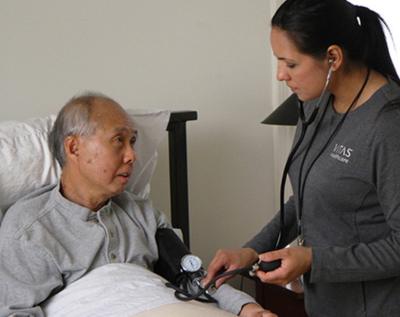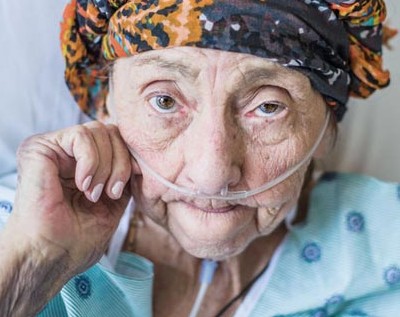VITAS Supports Physicians in Managing Patients’ Pain
Pain is a complex symptom accompanying many life-limiting illnesses. The highest prevalence of severe pain occurs in adult patients with advanced cancer.1 In addition to pain, these patients often experience dyspnea and distress at the end of life, and use intensive, hospital-based services near death.2
Pain can be effectively managed at the end of life, and hospice makes pain management a priority. A recent study examined 1,970 cancer patients, half of whom were receiving hospice care. The control group did not receive hospice care. Ninety-one percent of the hospice patients were administered pain medication to manage symptoms, compared to 81 percent of control patients.2
Families of patients receiving hospice care reported that patients' pain management regimens were appropriately tailored to their symptom levels, a key component of quality care and patient satisfaction. Some 80 percent of families said their loved ones on hospice received “just the right amount” of pain medication. The researchers also found that the positive effects of hospice care increased as duration of stay increased.2
VITAS physicians specialize in helping with pain
VITAS’ hospice physicians partner with attending physicians to identify the best pain treatment for terminally ill patients. Together, we ensure that patients receive the medications needed to relieve their pain and prevent further suffering, allowing them to enjoy an optimal quality of life during their remaining time. In addition to clinical expertise, VITAS’ also offers educational materials that include:
- VITAS pain management guidelines designed specifically for the treatment of terminally ill patients. These protocols contain information on the proper dosing and titration of opioid analgesics
- Case studies on the successful management of complex pain in terminally ill patients
- Patient and family education materials to facilitate understanding and explore options for pain management
- Non-pharmacological interventions, such as music and massage therapy, that help ease patients’ pain and offer comfort (availability varies by location)
Comprehensive care beyond physical pain
Because end-stage illnesses often involve more than physical pain, VITAS’ multidisciplinary hospice team complements the care attending physicians provide by addressing the spiritual and emotional needs of patients and their families. In addition to a specially trained palliative care physician, the hospice team can include a nurse, hospice aid, bereavement specialist, pharmacist, chaplain and social worker.
Talk to a VITAS pain management expert who can help
A VITAS hospice physician who specializes in pain management is available to help manage any type of pain in terminally ill patients. The patient’s attending physician retains the patient while collaborating with the hospice physician.
Partnering with a VITAS pain specialist can help ensure appropriate use of opioids, optimal drug delivery and formulations and proper timing of doses. VITAS’ experts are skilled at addressing complex pain management challenges, such as:
- Refractory pain
- Generalized plus localized pain, requiring multiple analgesics
- Patients who are unable to tolerate some medications
- Patients who develop undesirable side effects
- Increased risk of drug interaction due to multiple analgesics
- Increased risk of toxicity due to analgesic doses
- Inappropriate analgesics for severity of pain
- Problems with titration of opioids
- Patients who are unable to comply with recommended drug delivery methods
- Patients who have yet to achieve satisfactory levels of pain control
VITAS will also evaluate patients to determine if nonpharmacological pain interventions are appropriate.
1National Cancer Institute. “Pain Overview.” Web. http://www.cancer.gov/cancertopics/pdq/supportivecare/pain/HealthProfessional/page1 Accessed September 10, 2014.
2Kumar P. et al., Family Perspectives on Hospice Care Experiences of Patients with Cancer. Journal of Clinical Oncology - published online before print December 19, 2016.

